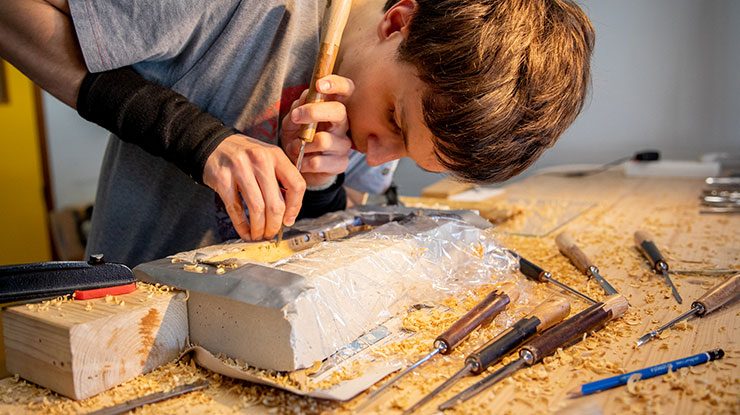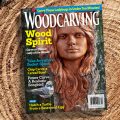By Kaylee Schofield
To learn how to carve your own panel of lace, pick up a copy of our summer issue HERE!
To fully grasp the magnitude of Julien Feller’s detail work, you might need a magnifying glass. Inspired by 14th-century micro-carvings and the flowing forms of Baroque artists such as Grinling Gibbons, Julien has spent the last five years perfecting his own highly specialized craft: handcarved lace. Meeting traditional carving styles with his own contemporary flair, Julien has turned his Martelange, Belgium shop into a laboratory of sorts—where he pushes wood to the limits of what it can be.
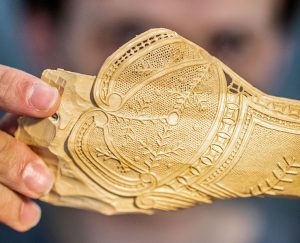
Julien turns slabs of wood into paper-thin masterpieces. Photo by Melanie Markovic.
WCI: What made you start carving wood into lace? Why does lace appeal to you?
Julien: I started to carve lace in 2015, while I was still studying sculpture at Saint-Luc Tournai Institut. I had a big fascination with Master carvers Grinling Gibbons (1648-1721) and David Esterly (1944-2019). Gibbons was known for carving high-quality wooden lace pieces (such as the Cravat), and Esterly for delicate botanicals. I felt impressed and inspired to make my own pieces, so I began looking for lace designs to try. Thereby I created Brussels Lace No.1 in 2016. My second piece, in 2018, expressed even more of my influences and sensitivities as an ornament maker. The more I carve, the more my personal style develops.
WCI: Have you found that certain wood varieties lend themselves better to lace carving than others? Which ones and why?
Julien: For my very first piece of lace I used limewood (which is similar to basswood), but I couldn’t achieve something really delicate. So I turned to boxwood, which gives me many more possibilities for carving. Boxwood’s high density and compact grain make it more resistant and better able to hold fine details.
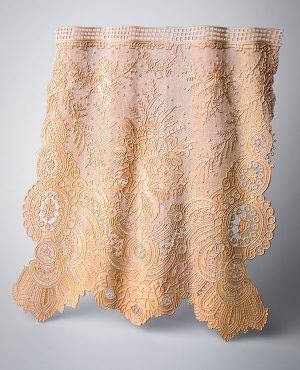
Julien’s second work, Brussels Lace No. 2.
WCI: Your creations seem quite delicate. What tools and techniques do you use to ensure that the wood doesn’t break as you carve?
Julien: Yes, my carvings are quite delicate, but each one is actually a massive block of wood until the very last step—when I remove what’s behind the carving.
Making the piece really thin is the trick, so I block the carved item into a plaster mold; this allows me to flip the carving over into a support that hugs its exact contours. Then it doesn’t break when I carve the back.
My tools of choice are traditional gouges; I also use some micro gouges that I recreated while reading about a school of micro-carvers who worked during the late Gothic and early Renaissance periods (12th to 16th centuries) in the Netherlands. These carvers used gouges measuring between 0.3mm and 4mm to create very intricate pieces in boxwood. My homemade 0.3mm gouge is a key tool in my process of making tiny details; unfortunately, that tool isn’t readily available anymore. I recommend using a sharp awl in its place.
See a video of Julien’s plaster method below:
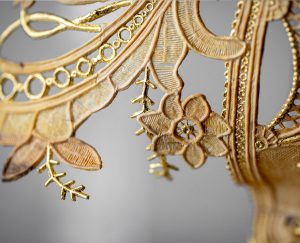
Pierced details on one of Julien’s carvings.
WCI: How long does it typically take you to carve one of the larger panels?
Julien: It takes me around 1,500 hours (or around eight months) to complete pieces like Brussels Lace No.2. The work is laborious, and the best possible results require much devotion.
WCI: Where can people find your work—in galleries, shops, or personal collections?
Julien: I participate in shows and gallery events across Europe and North America, such as the prestigious Biennale of Fine Contemporary Craft in Luxembourg. I also take appointments, if people want to visit my workshop space and learn more about my creations.
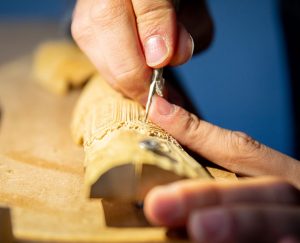
It takes Julien up to 1,500 hours to complete one of his delicate creations.
WCI: What do you plan to carve next? What are your plans for the future?
Julien: I received a new challenge recently—a wooden lace panel inspired by carvings in the Church of San Giorgio Maggiore in Venice, Italy. This piece incorporates some of my designs, as well as elements original to the church.
Learn to carve your own miniature lace panel in the summer issue. Find more of Julien’s work at julienfeller.com.
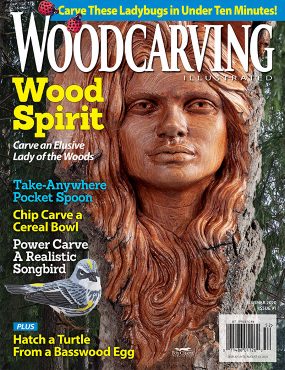 |
Get the Summer 2020 Issue Purchase the IssueFor more articles like this, subscribe to Woodcarving Illustrated magazine. Magazine SubscriptionPlus! Get digital mini magazines in your e-mail between printed issues.
|


